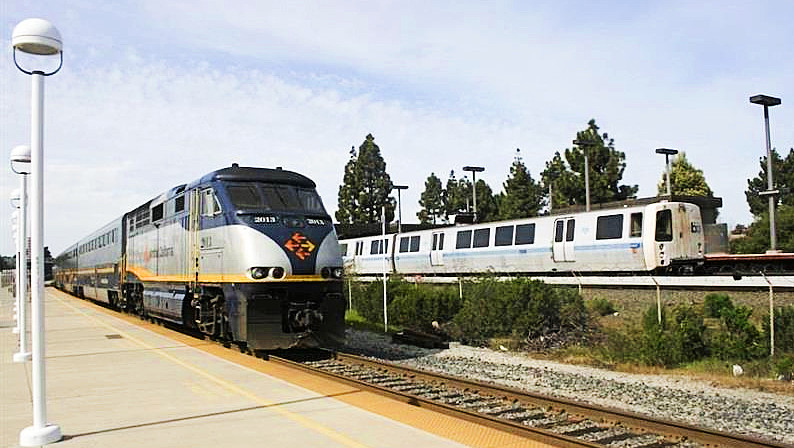Before any shovel hits the ground on construction of a proposed second transbay rail crossing between Oakland and San Francisco, an estimated $1 billion will need to be spent, stated BART General Manager Robert Powers. The “B” word turned heads on Twitter, where a transit advocate incorrectly posted that the massive sum would be needed just for the project’s environmental review. But BART officials promptly noted the $1 billion would pay for a broader regional planning project that aims to improve passenger rail connections across 21 Northern California counties, called the Link21 Program. The second transbay rail crossing is the key feature of Link21.
The $1 billion estimate “includes all the work before the environmental review as well travel demand analysis, land use modeling, planning and engineering, outreach and engagement,” said BART spokeswoman Alicia Trost. “This is for the entire Link21 program which includes more than a rail crossing between Oakland and San Francisco.”
Still, critics remain. “I guess that’s a bit of a relief, but $1 billion is an awful lot of money going to paperwork, planning & procedure,” Tweeted Christopher Pederson, who identifies himself on the social media platform as an environmentalist and former chief counsel of the California Coastal Commission.
The billion-dollar price tag is, of course, a fraction of the cost of actually building a new transbay rail crossing, estimated at $29 billion (in 2040 dollars) in the Metropolitan Transportation Commission’s regional transportation plan, called Plan Bay Area 2050.
Link21, a partnership between BART and Capitol Corridor, wants to better connect rail passenger services across the so-called “Northern California Megaregion.” A 1-hour train ride to and from San Francisco takes you 35 miles on average, whereas trains in New York City and Washington D.C. take riders more than 80 miles in an hour, according to a report by the Bay Area Council Economic Institute (BACEI) that advocates for the plan. The Link21 Program envisions speeding that up, and it says the key to making that possible is building a second transbay crossing, because the existing tube creates a transit bottleneck.
A second transbay crossing, one that could accommodate commuter, intercity and high speed rail, would enable projects that expand the rail network across the Northern California Megaregion, according to Link 21. In a January statement, Rob Padgette, managing director of the Capitol Corridor, envisioned direct rail travel from Sacramento to San Francisco. Currently to travel by rail between those cities, passengers must transfer to BART at Richmond Station or hop on connector buses in Emeryville. At a public meeting in February, Padgette said Link21 would provide better connections between the Peninsula and Sacramento regions.
The BACEI report published the below map of proposed projects within the Megaregion, which includes the proposed Dumbarton Crossing.

The Link21 Program, including its signature second transbay rail crossing project, expects to enter Phase 1 in 2022, where program alternatives will be identified and later refined during Phase 2 (2024). Phase 3 will begin in 2029 and will consist of actual design, construction, and testing, according to Link21.
BART is using voter-approved Measure RR funding to begin studying and developing Link21. Additional funding sources to fund future phases are being sought, according to Link21.






